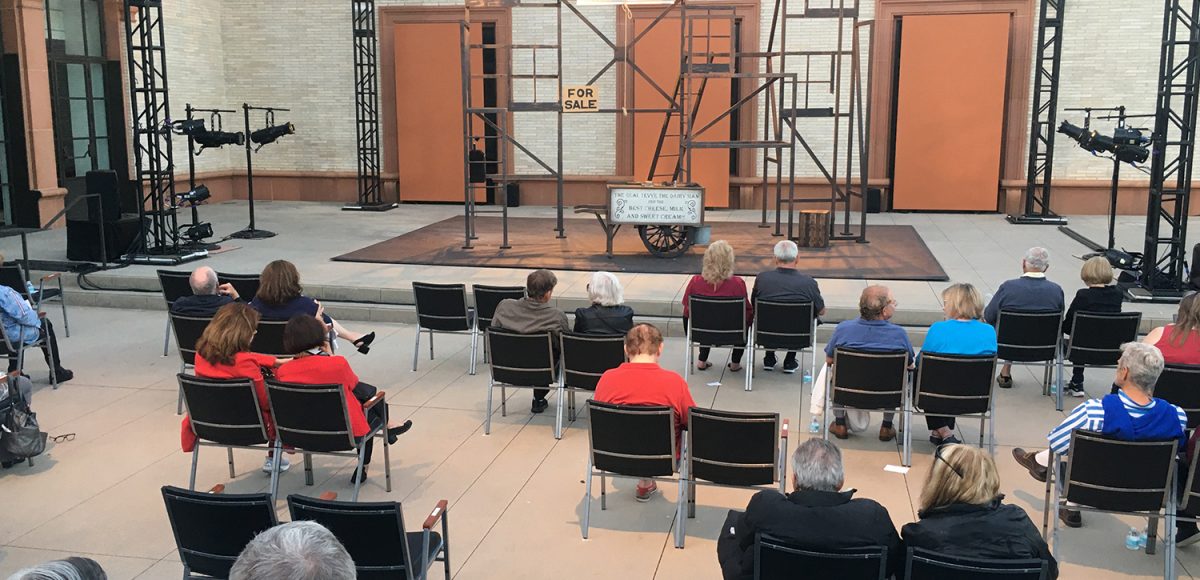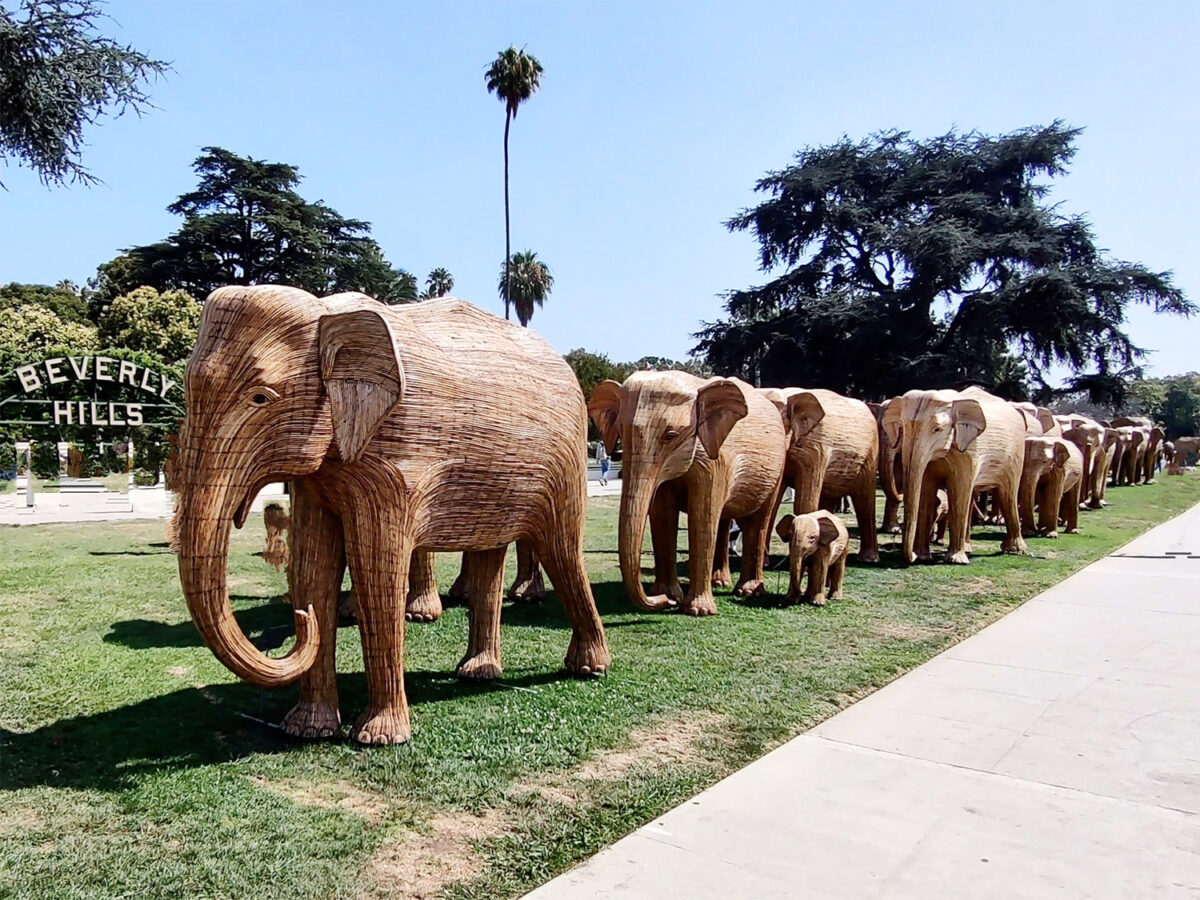When the overhead lights were off, the audience wore t-shirts. Once the lights glowed a pale pink, someone in the third row of twin seats, spaced out like animals on Noah’s Ark, someone put on a sweater. By the time the sun set over The Wallis’ Promenade Event Terrace, the site of The Wallis’ pop-up, socially distanced outdoor stage, the lights glowed neon blue, and the audience zipped up their jackets. When theater is outside, the earth becomes another character to enjoy.
After eight months of “unplanning” and another six months of creatively staged virtual performances, coronavirus has now compelled the Wallis to build an entire outdoor theater that was completed in about two weeks, just in time for the first live performances in early June. Earlier this month, the Courier was fortunate enough to attend one of its late-evening shows.
“We had a space in the Promenade Terrace there that in my mind was perfect for us to create and design an outdoor theater,” Artistic Director Paul Crewes told the Courier. “It was designed specifically for the COVID world. We produced a new play, ‘Tevye in New York,’ which was a one-person show, because rehearsing a company of six, or more than one person, was obviously going to be problematic. We obviously put these plans in place at a point when we didn’t really know what the world was going to look like in June, and we started to plan in December of last year of producing an outdoor theater space, and producing a piece of work for that space specifically.”
The stage is 36 feet wide, 20 feet deep, and cost the Wallis approximately $40,000 to build and maintain through Sept. 2, according to Crewes. Crewes came up with the concept of the stage and its surroundings, and worked with the Wallis’ in-house production team and Technical Director Matt Waldron on the final designs.
Different theater and dance performances will continue in the outdoor space until Sept. 2, and in October, The Wallis will return inside for a full, uninterrupted season, following whatever COVID protocols are in place at the time. Crewes also said he’d like to bring the stage back next summer, though it might interfere with the many outdoor fundraisers and shows the theater normally holds in the Promenade Event Terrace.
It’s been a long, hard road for The Wallis this past International Year of Unplanning. In March 2020, Al Pacino performed to a sold-out crowd at the indoor Goldsmith Stage. The very next day, they canceled all future performances, and two days after that, Crewes remembers stopping an international theater crew from getting on a plane.
The long, bleak road of “dismantling the season” had begun. The Wallis went dark from March until November, with only a skeleton crew keeping up the building. With no new revenue coming in, the theater relied on emergency grants, and cut half its expenses, which included furloughing half the staff.
But leave it to a team of creatives to get, well, creative. Once Crewes and his crews could go back inside, they staged a number of online performances filmed all over the building. “We tried to create theatrical events that were filmed, rather than films or TV,” Crewes said. “It was trying to capture the theatrical style, and remind people of the venue.”
In November, the theater hosted a virtual gala, which featured different works of art filmed all over its resplendent campus to “get people excited to see the building again.” That same month, they started a series of virtual “Sorting Room Sessions” concerts, filmed HD in a theater decked out like a nightclub. Virtual classes also started up again. Throughout the course of the rehearsals, actors and musicians were required to take weekly COVID tests, Crewes said.
Crewes said his team is considering livestreaming performances in the future, because it can reach so many more people. But ultimately, before anything else, the Wallis is about live art, not live streaming.
“It was very exciting to see people coming back people in the building,” Crewes said. “It felt like we were able to do what we’re supposed to do, which is create live performance, and let people see it.”







